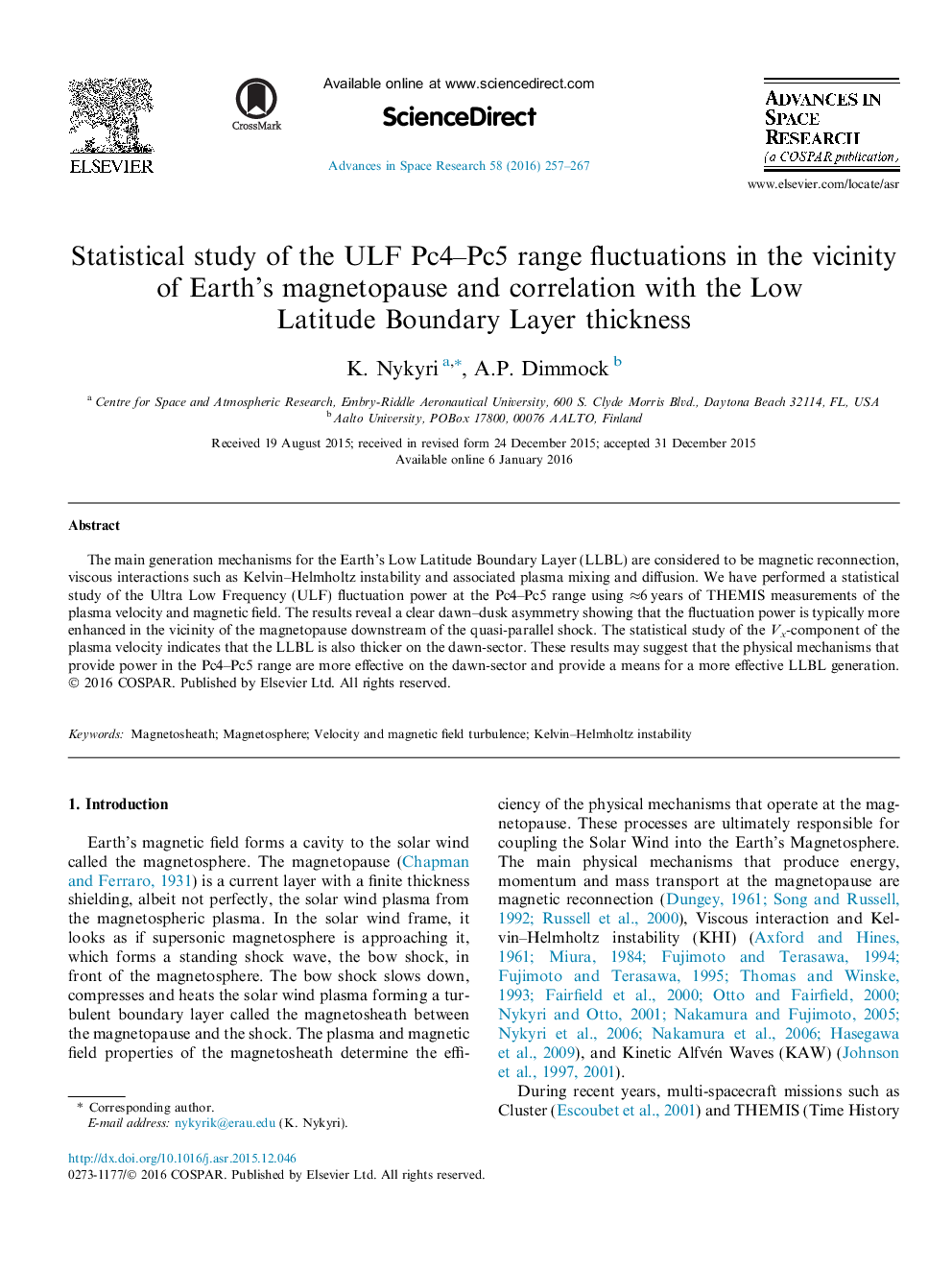| Article ID | Journal | Published Year | Pages | File Type |
|---|---|---|---|---|
| 1763310 | Advances in Space Research | 2016 | 11 Pages |
Abstract
The main generation mechanisms for the Earth's Low Latitude Boundary Layer (LLBL) are considered to be magnetic reconnection, viscous interactions such as Kelvin-Helmholtz instability and associated plasma mixing and diffusion. We have performed a statistical study of the Ultra Low Frequency (ULF) fluctuation power at the Pc4-Pc5 range using â6Â years of THEMIS measurements of the plasma velocity and magnetic field. The results reveal a clear dawn-dusk asymmetry showing that the fluctuation power is typically more enhanced in the vicinity of the magnetopause downstream of the quasi-parallel shock. The statistical study of the Vx-component of the plasma velocity indicates that the LLBL is also thicker on the dawn-sector. These results may suggest that the physical mechanisms that provide power in the Pc4-Pc5 range are more effective on the dawn-sector and provide a means for a more effective LLBL generation.
Related Topics
Physical Sciences and Engineering
Earth and Planetary Sciences
Space and Planetary Science
Authors
K. Nykyri, A.P. Dimmock,
